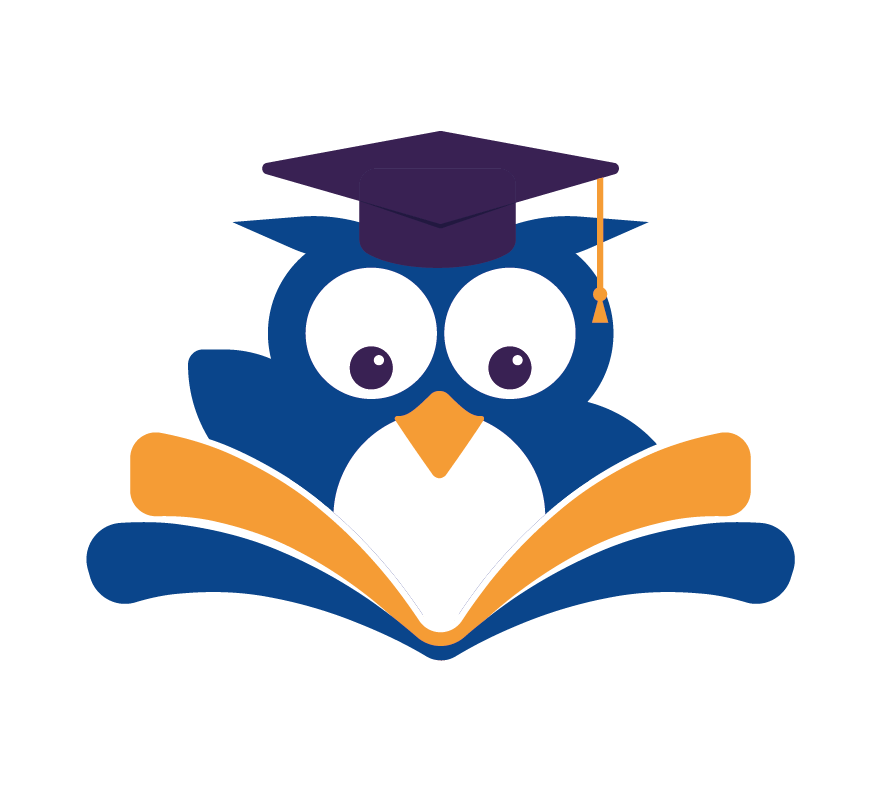Are you tired of feeling like learning is a chore? We’re here to help you rekindle the excitement! At some point, the thrill of discovering new things can fade. This leaves you feeling unmotivated.
Traditional education often focuses on rote memorization and standardized testing. This can drain the joy out of learning. We’re on a mission to change that. Our goal is to help you reignite your passion for knowledge and make learning enjoyable.
By exploring new approaches to learning motivation, we’ll show you how to break free from the monotony. We want to make learning a fulfilling part of your life.
Key Takeaways
- Discover how to rekindle your enthusiasm for learning.
- Learn new strategies for effective learning motivation.
- Transform your study routine into an enjoyable experience.
- Understand how to overcome common learning obstacles.
- Develop a personalized approach to learning that works for you.
The Fading Flame: Understanding Why Learning Motivation Diminishes
We’ve all felt the excitement of starting a new learning journey. But over time, that excitement can fade. It’s important to understand why this happens to keep our passion for lifelong learning alive.
Common Causes of Educational Burnout
Educational burnout comes from many sources. These include:
- Unrealistic expectations and pressure to perform
- Lack of personal interest in the subject matter
- Inadequate learning environments
Knowing these causes can help us fight against burnout and keep growing in our educational growth.
Recognizing the Signs of Learning Fatigue
Learning fatigue shows up in different ways. These include:
- Decreased focus and concentration
- Increased frustration with the learning material
- A general feeling of exhaustion
Spotting these signs early helps us take action to keep learning.
The Psychology Behind Motivation Cycles
Motivation ebbs and flows. It goes through highs and lows. Knowing this can help us stay on track with lifelong learning.
By understanding burnout, recognizing fatigue, and knowing about motivation cycles, we can keep our learning journey going. This helps us sustain our growth and keep our learning flame burning bright.
Assessing Your Current Learning Landscape
Starting again on our learning journey is exciting. First, we need to see where we are now. This means looking at our past learning, what we’re good at, and what we need to work on.
Evaluating Your Learning History and Patterns
Reflecting on our past learning helps us understand our patterns. Ask yourself:
- What subjects have I enjoyed learning about?
- What study habits have been most effective for me?
Self-Assessment Questions to Identify Strengths
Think about these questions to find your strengths:
- What are my most significant learning achievements?
- How have I overcome obstacles in my learning journey?
Recognizing Learning Achievements and Setbacks
It’s important to acknowledge both your successes and challenges. Knowing what works and what doesn’t helps us grow.
Identifying Personal Barriers to Continued Education
Be honest about what’s stopping you from learning more. Is it lack of motivation or not enough time?
Discovering Your True Learning Interests
Find topics that really interest you. Learning about things you love keeps you motivated.
Setting the Stage: Creating an Environment That Fosters Learning
Let’s make your study space better for learning. A well-designed area can boost your productivity and learning experience.
Designing Your Physical Learning Space
Creating a productive study space is key. Here are some important things to think about:
Essential Elements of a Productive Study Area
- Good Lighting: Make sure your study area is well-lit to avoid eye strain.
- Comfortable Seating: Choose a comfy chair to prevent getting tired.
- Minimal Clutter: Keep your study area tidy and free of clutter.
Ergonomics and Comfort Considerations
Ergonomics are crucial for your study setup. As OSHA says, good posture can prevent discomfort and injury.
“Sitting for long periods can lead to musculoskeletal disorders if not managed properly.”
Make sure your chair height is right so your feet are flat on the floor or on a footrest. Also, your monitor should be at eye level.
Digital Organization for Enhanced Learning
Organizing your digital tools is as important as your physical space. Use productivity apps to keep your files and tasks organized.
| Tool | Purpose |
|---|---|
| Evernote | Note-taking and organization |
| Trello | Task management |
Eliminating Distractions and Productivity Drains
Find and remove distractions in your study area. Turn off device notifications and use website blockers like Freedom to stay focused.
How to Reignite Your Learning Fire Through Purposeful Goal Setting
Setting the right educational goals is like adding fuel to the fire that drives your continuous learning mindset. To reignite your passion for learning, you need to establish clear, achievable objectives that align with your educational aspirations.
The SMART Approach to Educational Goals
The SMART approach is a proven method for setting effective goals. SMART stands for Specific, Measurable, Achievable, Relevant, and Time-bound. By applying this framework, you can transform vague aspirations into concrete targets.
For instance, instead of saying “I want to learn a new language,” a SMART goal would be “I will learn Spanish by dedicating 30 minutes each day for the next 3 months.”
Breaking Down Large Learning Projects
Large learning projects can be overwhelming, but breaking them down into smaller tasks makes them manageable. This approach helps in maintaining momentum and reducing the feeling of being overwhelmed.
- Identify the main objective of your learning project.
- Divide the project into smaller, actionable steps.
- Set deadlines for each step to maintain progress.
Tracking Progress and Celebrating Milestones
Tracking your progress is crucial for staying motivated. By celebrating milestones, you reinforce your learning behavior and stay engaged.
Digital and Analog Tracking Systems
You can use various tools to track your progress, from digital apps like Trello and Habitica to analog methods such as journals and planners. The key is to find a system that works for you and stick to it.
| Tracking Method | Description | Benefits |
|---|---|---|
| Digital Apps | Apps like Trello and Habitica | Reminders, flexibility, and accessibility |
| Analog Methods | Journals and planners | Tactile experience, no screen time |
Meaningful Rewards That Reinforce Learning
Rewarding yourself for achieving milestones is a great way to reinforce your learning behavior. Choose rewards that are meaningful and motivating to you, such as a new book, a course, or even a fun activity.
“The key to successful learning is not just setting goals but also celebrating the small victories along the way.”
Finding Your Learning Style: Personalized Approaches to Knowledge Acquisition
To reignite your learning fire, it’s key to know your unique learning approach. We all learn differently, and finding your style can make studying better.
Visual, Auditory, Reading/Writing, and Kinesthetic Learning
There are four main learning styles: visual, auditory, reading/writing, and kinesthetic. Visual learners do well with diagrams and images. Auditory learners like listening to lectures. Those who are reading/writing oriented learn best from written texts. And kinesthetic learners do best with hands-on experiences.
Adapting Study Methods to Your Personal Style
After figuring out your learning style, you can adjust your study methods. For example, if you’re a visual learner, using mind maps and diagrams can help a lot. Trying out different methods will help you find what works best for you.
Experimenting with Mixed Learning Approaches
Even if you have a main learning style, mixing approaches can improve learning. Mixed learning means using different methods to make studying more interesting and effective. By mixing up your learning techniques, you can keep your study sessions exciting and keep your motivation up.
To reignite your learning fire, being open to new learning strategies is key. By understanding and using your personal learning style, you can make learning more fun and successful.
The Power of Connection: Learning in Community
Connecting with others who love learning can spark your passion for knowledge. Learning with others can make your educational journey more exciting. It helps you stay motivated and supports lifelong learning.
Finding Your Learning Tribe
To find your perfect learning group, look at both online and offline options. Online forums and social media groups let you connect with learners globally. Local workshops and study groups offer face-to-face interaction.
Online and Offline Learning Communities
Online platforms like discussion boards and virtual meetups work well too. You can join online courses with community features or attend local seminars that interest you.
Evaluating Community Fit for Your Goals
When choosing a learning community, check if it matches your personal development goals. Ask yourself: Does the community fit my learning style? Are the resources and discussions relevant to my goals?

Collaborative Learning Strategies
Once you’ve found your tribe, use collaborative learning strategies. This includes group projects, peer teaching, and discussion groups. These methods can improve your understanding and retention.
Accountability Partnerships for Sustained Motivation
Creating an accountability partnership in your learning community can boost motivation. Regularly checking in with a learning partner helps you stay focused on your goals. You can also celebrate your progress together.
As the saying goes, “
Alone we can do so little; together we can do so much.
” Embracing the power of community can greatly improve your learning journey.
Technology as Your Learning Ally: Digital Tools and Resources
Learning has never been easier thanks to digital resources. Technology offers tools and platforms that make studying fun and efficient. This helps you grow in your education.
Apps and Platforms That Enhance Learning
Many apps and platforms support learning. For example, Anki uses spaced repetition to help you remember better. Coursera and edX also offer courses from top universities.
Online Courses and Educational Communities
Online courses and communities are key for learning today. Udemy and Skillshare have courses on many subjects. Reddit’s r/learnprogramming and Stack Exchange are great for getting help from experts.
Using AI and Automation to Support Your Learning Journey
AI and automation can make learning more productive. They help you focus on your goals by streamlining your studies.
AI-Powered Learning Assistants
AI assistants keep you organized and on track. Google Classroom and Microsoft Teams use AI to help with learning and teamwork.
Automation for Spaced Repetition and Retention
Automation helps with spaced repetition, a method that improves retention. Anki automates this, ensuring you review material at the best times.
| Tool | Description | Benefit |
|---|---|---|
| Anki | Flashcard app using spaced repetition | Improved retention |
| Coursera | Online learning platform | Access to university-level courses |
| Udemy | Online course platform | Variety of courses on different subjects |
Using these digital tools and resources can improve your learning. It boosts your productivity and helps you reach your educational goals.
Practical Techniques to Reignite Your Learning Fire
Reigniting your learning fire needs more than just a spark. It requires practical techniques to change your study sessions. Let’s look at some effective strategies to boost your learning motivation and productivity.
The Pomodoro Technique for Focused Study Sessions
The Pomodoro Technique is a simple yet powerful method to enhance your focus. It involves working in concentrated 25-minute increments, followed by a 5-minute break. After four cycles, take a longer break of 15-30 minutes. This technique helps you stay focused and avoid burnout.
- Choose a task you want to work on.
- Set a timer for 25 minutes.
- Work on the task without any interruptions until the timer goes off.
- Take a 5-minute break.
- Repeat the cycle for a total of four “Pomodoros.”
Mind Mapping and Visual Organization Methods
Mind mapping is a visual technique that can help you organize and connect your ideas. Start by writing down a central idea or concept, then branch out to related topics or subtopics. Use colors, symbols, and images to make your mind map more engaging and memorable.

Interleaving: Mixing Up Your Learning for Better Retention
Interleaving involves switching between different types of material or problems to deepen your understanding and improve retention. Instead of focusing on one topic at a time, mix up your study sessions to keep your brain engaged.
Implementation Steps for Interleaved Practice
- Identify the different topics or types of problems you want to interleave.
- Create a study schedule that alternates between these topics.
- Start with a topic, then switch to another, and so on.
Scheduling Mixed Learning Sessions
To implement interleaving effectively, plan your study sessions in advance. For example, if you’re studying for a math test, you could alternate between different types of problems, such as algebra, geometry, and calculus. This approach keeps your study sessions fresh and challenging.
By incorporating these practical techniques into your study routine, you can reignite your learning fire and achieve your educational goals. Remember, the key is to experiment with different methods to find what works best for you.
Overcoming Learning Plateaus and Obstacles
As you explore the world of learning, you might hit roadblocks. But these hurdles are a common part of learning. With the right approach, you can get past them and keep growing.
Strategies for Pushing Through Difficult Concepts
When you face tough ideas, break them down into smaller parts. Chunking information is a great way to do this. It helps you understand and remember better.
Managing Information Overload
We’re surrounded by information all the time. To handle this, try these strategies:
- Create mental models to organize information
- Use visual aids like diagrams and mind maps
- Prioritize information based on relevance and importance
Chunking Information for Better Processing
Chunking means grouping info into categories. For instance, when learning a new language, group words by theme like food or travel.
Creating Mental Models and Frameworks
Mental models help you grasp complex info. They let you organize your knowledge and connect different pieces.
Turning Failures into Learning Opportunities
Failure is a natural part of learning. Instead of getting down, see it as a chance to learn. Figure out what went wrong and try again.
By keeping a continuous learning mindset and using good educational resources, you can beat learning hurdles and reach your goals.
Conclusion: Sustaining Your Learning Journey
As we finish our look at reigniting your learning fire, it’s clear that keeping up with learning is hard work. We must always keep our passion for learning alive. This is key to lifelong learning.
By using the tips from this article, you’re ready to make learning fun and fulfilling. The main thing is to stay curious and open to new things. Always keep growing.
Keep sharing your learning journey with others and find new chances to learn. This way, you’ll not only keep your learning spark alive. You’ll also keep it shining bright, guiding you on a path of endless discovery and growth.

